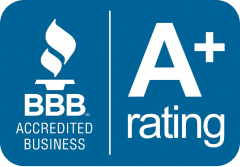Powered by AAA Web Agency |

Is Medicare Part A free?
The majority of people do not pay a Medicare Part A premium.
This is the part of Medicare that pays for in-patient hospital treatment, such as hospital stays and, in some cases, rehabilitation stays if a doctor finds them medically essential.
According to Medicare.gov, a person meets the following criteria to be eligible for premium-free Medicare Part A:
They are both 65 years old.
They or their spouse had to work for a minimum of 40 quarters and pay Medicare taxes.
They or their spouse receive or are eligible for Social Security or Railroad Retirement Board retirement payments.
They are under the age of 65 and have a handicap or medical condition, such as end-stage renal disease.
If a person passes these requirements, they are eligible for Medicare Part A coverage without paying a monthly fee.
People who do not qualify for a free Medicare Part A plan may be able to pay a portion of their premiums. In 2022, a person who worked and paid Medicare taxes for 30–39 quarters could pay a monthly Part A premium of $274.
If a person worked less than 30 quarters, they may be required to pay a $499 monthly Part A premium.
Even if they are eligible for a free plan, people will still have out-of-pocket expenditures for Medicare Part A.
These costs include a $1,556 deductible for each benefit period in 2022. When an insured person is admitted to a hospital or skilled nursing facility, a benefit period under Medicare part A begins. It expires 60 days after the person getting hospital care for the stay no longer needs it.
If an individual needs another hospital stay after the 60 days are over, the deductible resets and they must fulfill it again.
Find Medicare Plans in 3 Easy Steps
We can help find the right Medicare plans for you today
Is Medicare free?: Medicare is a federal healthcare insurance program for adults 65 and older, as well as those with specified medical conditions. The program is intended to assist older persons in covering the costs of healthcare, but it is not entirely free.
Coinsurances, deductibles, and monthly premiums are all part of Medicare, and each portion has its own set of charges.
A deductible is the amount of money a person must pay out of pocket before an insurance company would cover treatment.
When a person pays a percentage of the cost of treatment or consultation, this is known as coinsurance.
Instead of a percentage, copayments are predetermined amounts that a person pays for a medicine prescription or service.
Each of these elements can increase the cost of receiving healthcare through a Medicare plan.
The expenses and services of the various aspects of Medicare are explained in this article.
Read More: What is Medicare
Is Medicare Part B free?

Medicare Part B is the portion of Medicare that pays for doctor’s visits and other related expenses. A monthly premium is required if a person chooses Medicare Part B. The standard premium for 2022 is $170.10.
Depending on their income, some persons may have to pay a higher monthly premium. Part B will cost a little more for people who earn more than a specific amount.
Along with the premium, there are other out-of-pocket expenses. For 2022, Medicare Part B has a $233 deductible and a 20% copay for consulting with Medicare-approved doctors.
Is Medicare Advantage free?
Medicare Advantage, often known as Medicare Part C, is a healthcare plan that combines the benefits of Medicare Parts A and B with some extra benefits, such as prescription medication coverage. Some plans additionally include coverage for vision and dental care. Medicare Advantage is a private health insurance option provided through private health insurance providers.
When looking for Medicare Advantage plans, a person may see that some of them have no monthly premiums. The exact cost depends depend on which Advantage programs are offered in a given area.
A person will, however, have to pay a premium for Medicare Part B. People may also discover that the plans with no premiums have higher out-of-pocket expenses.
Because they get money from Medicare, private health insurance firms can sometimes give premium-free treatments.
The insurance companies then use this money to bargain with their network of doctors, hospitals, and healthcare groups to lower expenses. As a result, they will be able to pass on cost savings to their members.
Having a Medicare Advantage plan, like other parts of Medicare, does not imply that a person will not be responsible for any healthcare costs. Specific deductibles and copayments for specific services are common in Medicare Advantage plans.
The cost-effectiveness of a Medicare Advantage plan is determined by the sorts of healthcare services a person utilizes on a regular basis.
A yearly out-of-pocket expense limit is usually included in Medicare Advantage plans. This means that when a person spends a specific amount of money on deductibles or coinsurance, the plan will cover all treatment costs until the following year.
Is Medicare Part D free?
Prescription drug coverage is provided under Medicare Part D. These services are included in the monthly fee for those who have Medicare Advantage.
People with traditional Medicare policies who wish to buy Medicare Part D from a private insurer will have to pay a monthly fee to cover their prescription medication costs. Depending on the types of drugs they take, individuals may potentially incur out-of-pocket expenses.
The Kaiser Family Foundation estimates that the average monthly premium for prescription medication coverage will be $43 in 2022. The cost of privately managed prescription programs will vary.
Is Medicare Supplemental Insurance (Medigap) free?
Traditional Medicare recipients can purchase a Medicare supplement insurance policy, also known as Medigap, to assist pay out-of-pocket expenses and some additional services that the Original Medicare does not cover.
These plans aren’t free, but they can help you save money on Medicare copayments, deductibles, and coinsurances.
These plans are offered by private health insurance firms for a monthly fee.

Summary
The cost of healthcare tends to rise as a person gets older.
Medicare was created by the government to protect seniors, assist them in covering their expenditures, and negotiate reasonable healthcare services on their behalf.
While Medicare is less expensive than commercial insurance, there are still monthly premiums and out-of-pocket expenses.
Medicare income limits: What to know
If a person meets the eligibility requirements for Medicare, they may enroll regardless of their income. There are no Medicare income limits that pertain to eligibility, but income can decide some monthly costs.
Those with higher incomes must pay higher monthly premiums for two Medicare programs.
These include Part B, which is the outpatient medical coverage of original Medicare, and Part D, the program that provides prescription drug coverage.
The elements of Medicare that rising premiums may or may not affect are discussed in this article.
It next looks at the income adjustments for part B and D premiums, as well as the rationale for them.
Finally, it explains when and how to notify Social Security of income changes, as well as how to appeal Medicare’s decision on a premium adjustment.
Income adjusted premiums
Part B
Part A, which covers inpatient care, and Part B, which covers outpatient care, make up Original Medicare.
Part B of the plan covers services like doctor visits, lab testing, medical equipment, and certain home health care.
Physical and occupational therapy are also covered.
Part D
Prescription medicine coverage is included through Part D.
A person with original Medicare can choose to enroll in a private insurance company’s plan.

Non-income adjusted premiums
For the following programs, the law does not require Medicare to change premiums depending on income:
Part C of Medicare is also known as Medicare Advantage. This policy combines the original Medicare Parts A and B benefits into single coverage.
Medicare supplement insurance is known as Medigap. This plan is only offered to people with original Medicare.
Both Medicare Advantage and Medigap plans are administered by private insurance firms.
The basis for higher premiums
Several congressional acts in recent decades, according to the Kaiser Family Foundation, have compelled Medicare to alter monthly premiums based on income.
The adjustments are based on a person’s modified adjusted gross income, which is the sum of adjusted gross income and interest income that is not taxed.
Medicare uses a person’s federal tax return from the Internal Revenue Service to assign premiums (IRS). Medicare uses tax returns from 2020, the most recent year the IRS furnishes to Social Security, to calculate beneficiary premiums for 2022.
The majority of the premium adjustment income thresholds are subject to change. Every year since 2020, the government has adjusted all of the levels to match general price inflation. The top income level’s threshold is the lone exception to these modifications.
Find Medicare Plans in 3 Easy Steps
We can help find the right Medicare plans for you today
Premium adjustments for Part B
According to Social Security, the government pays about 75% of the Part B payment for most recipients, leaving the remaining 25% to the individual.
Individuals with higher salaries, on the other hand, pay somewhere between 35 and 85 percent of the premium.
The majority of people earn within the usual rate range, which is $170.10 in 2022. This sum is subject to vary each year.
According to Social Security, the rising premium costs affect less than 5% of Medicare recipients.
The chart below shows the yearly income thresholds linked with adjusted Part B premiums in 2020.
| File individual tax return | File joint tax return | File married and separate tax return | 2021 Part B premium |
| $91,000 or below | $182,000 or below | $91,000 or below | $170.10 |
| above $91,000 up to $114,000 | above $182,000 up to $228,000 | not applicable | $238.10 |
| above $114,000 up to $142,000 | above $228,000 up to $284,000 | not applicable | $340.20 |
| above $142,000 up to $170,000 | above $284,000 up to $340,000 | not applicable | $442.30 |
| above $170,000 and below $500,000 | above $340,000 and below $750,000 | above $91,000 and below $409,000 | $544.30 |
| $500,000 or above | $750,000 and above | $409,000 and above | $578.30 |

Premium adjustments for Part D
The government pays a major amount of the overall cost of Part D for most people, and the recipients are responsible for the rest.
Higher-income individuals will pay a premium consisting of an additional sum added to the base rate, which is estimated to be $33 in 2022. This rate can fluctuate year to year.
The chart below shows the yearly income thresholds linked with modified Part D premiums in 2020.
| File individual tax return | File joint tax return | File married and separate tax return | 2021 Part D premium |
| $91,000 or below | $182,000 or less | $91,000 or below | your plan premium |
| above $91,000 up to $114,000 | above $182,000 up to $228,000 | not applicable | $12.40 + your plan premium |
| above $114,000 up to $142,000 | above $228,000 up to $284,000 | not applicable | $32.10 + your plan premium |
| above $142,000 up to $170,000 | above $284,000 up to $340,000 | not applicable | $51.70 + your plan premium |
| above $170,000 and below $500,000 | above $340,000 and below $750,000 | above $91,000 and below $409,000 | $71.30 + your plan premium |
| $500,000 or above | $750,000 and above | $409,000 and above | $77.90 + your plan premium |
Declaring changes
A person’s annual income can fluctuate due to a variety of life circumstances.
Individuals who have had any of the following experiences should tell Social Security of any changes in their income:
They either become divorced, married, or widowed.
Due to a calamity or occurrence beyond their control, they or their spouse lose the income-producing property.
They or their partner work fewer hours or no longer work at all.
Due to the reorganization or bankruptcy of a previous or present employer, they or their spouse receive a settlement.
They or their spouse either quit receiving a pension or begin receiving one.
Summary
An individual’s income cannot be so high that they are ineligible for Medicare. Those with extremely high earnings are eligible to participate.
Individuals with greater incomes, on the other hand, pay higher premiums for Parts B and D, but the Medicare income restrictions that determine premium rates affect only a small fraction of the population.
A person can submit an appeal with Social Security if they believe Medicare made a mistake in their premium adjustment decision.








